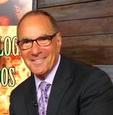If you are like most folks who read websites, magazines, and newspapers today, you may be totally confused by the sensational headlines that deal with wellbeing, health, obesity, exercise, nutrition, stress and a whole host of other related topics. It seems that on Monday, obesity is caused by one thing and by Wednesday, it’s something else. Eat this, not that, and a day or two later, it’s just the reverse. Yes, "journalists" poorly schooled in science murder science. It's enough to make us toss out the whole idea of listening to experts. But wait. Before you do that, consider the points below.
It’s been observed, “An educated person is one who has learned that information almost always turns out to be at best incomplete and very often false, misleading, fictitious, mendacious—just dead wrong.”
I want to help you be smarter consumers of the media hype on what I call “sigh-ence” (read "science")—the way the media portrays sometimes good research, and indeed, sometimes very shoddy research.
Here are 5 tips to watch out for to spot “sigh-ence” as you read the next story tomorrow morning:
1: Sensational headlines and misinterpreted results. I saw one awhile back, one of my all time favorites, that said, “Minorities are Obese Because of Racism.” http://m.nationalreview.com/article/387408/psychologist-minorities-are-o... Sensational? You bet! If the headline is overly simplified, it may well simply be designed to get you to click on it and may have little to do with the actual data of the study. For the sake of making a good story, the article may have little to do with the actual research. Solution? Read the original research if you are interested.
2. Correlation and causation. There’s the old adage, “correlation does not imply causation.” Lots of murderers drank milk when they were children. That doesn’t mean that milk causes someone to become violent. The study above is an example of this. When someone studies the correlation between two variables, this does not lead to being able to state that one causes the other.
3. Conflict of interest. Obvious but always follow the money. Who’s paying for the research, who benefits from the findings and who makes the money the findings lead to? Scientists being paid to do research are often quite honest and ethical. But sometimes, the lure of personal and financial gain can lead to results and conclusions that are, well, “sigh-entific.”
4. No randomly assigned control group used. When looking at the results, ask if there was a randomly assigned group that did, or digested, or otherwise was exposed to X, while another randomly assigned control group was not at all exposed to the identical X.? If the answer is “no,” then perhaps this is simply a correlational or interview study. Nothing wrong with that, but not a whole lot of confidence you may want to place on the findings.
5. Small sample size or sample that does not relate to you. Here’s a simple rule: the smaller the sample used, the less confidence you can place in the results. Draw your conclusions cautiously if the research was based on, let’s say, a group of 20 “gym rats” all ages 18-23…when you are a moderately active baby boomer.
There are many ways to determine “sigh-ence,” but if you spot one of these 5, you may want to question the results before you go buying the new diet, drinking the new shake, buying that new piece of exercise equipment, or trying that new exercise. You can rest assure that tomorrow, another finding will likely hit the headlines. Perhaps journalists need to learn more about science to avoid putting out so much "sigh-ence." In the words of the brilliant Mark Twain, "Be careful about reading health books. You may die of a misprint."
Michael R. Mantell earned his Ph.D. at the University of Pennsylvania and his M.S. at Hahnemann Medical College, where he wrote his thesis on the psychological aspects of obesity. His career includes serving as the Chief Psychologist for Children’s Hospital in San Diego, and as the founding Chief Psychologist for the San Diego Police Department. He also served on the faculty of UCSD’s School of Medicine, Dept. of Psychiatry.
After retiring two years ago from practicing clinical psychology for 40 years, he has become a highly sought after transformational behavior and leadership coach and accomplishment mentor for senior executive business leaders, professional and elite amateur athletes, and everyday folks seeking personal well-being, optimal health and professional empowerment. He has worked in the media for nearly 40 years, appearing on every major talk and news show, and has been interviewed in, and written for, every major health and fitness magazine/website.
Michael is a member of the Scientific Advisory Board of the International Council on Active Aging, the Chief Consultant for Behavior Science for the Premier Fitness Camp at Omni La Costa, and served as the Senior Consultant for Behavioral Sciences for the American Council on Exercise.
Michael is an Organizational Advisor to Fitwall, Rock My Run, amSTATZ, Outburst Mobile, and speaks regularly for Rancho La Puerta and the Asia Fitness Conference in Bangkok, in addition to numerous other fitness-health organizations throughout the nation. He has been a keynote speaker for the University of California’s system wide “FitCon” and for UCLA’s “Stress Less Week” as well as for the Transformational Leadership Council.
He is a best-selling author of three books including the 25th Anniversary updated edition of his 1988 original “Don’t Sweat the Small Stuff, P.S. It’s All Small Stuff,” and his 1996, “Ticking Bombs: Defusing Violence in the Workplace.” He is listed in greatist.com’s 2013 “The 100 Most Influential People in Health and Fitness.” His fourth book, “It is ALL in Your Head” is his current project.

Post new comment
Please Register or Login to post new comment.